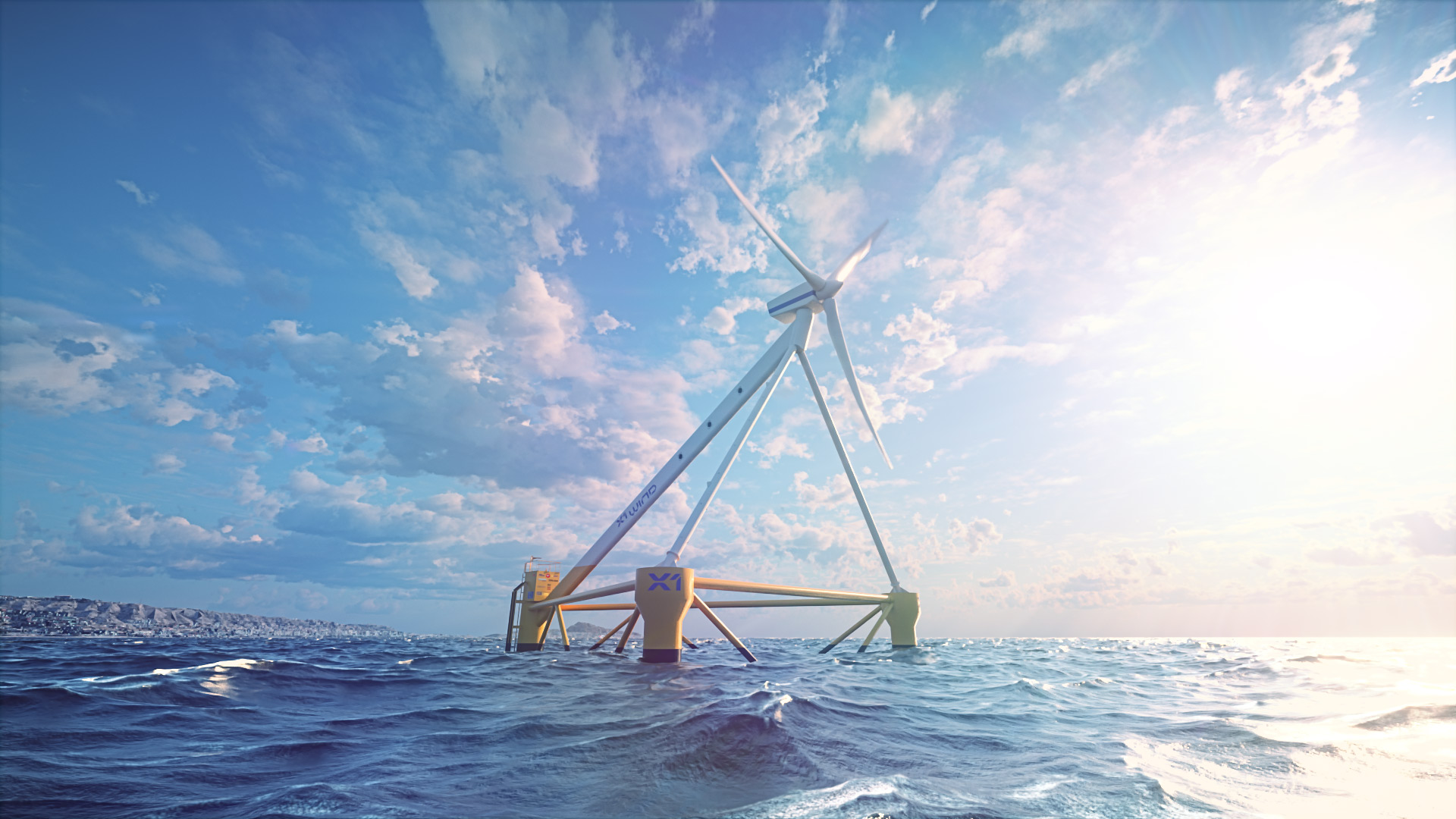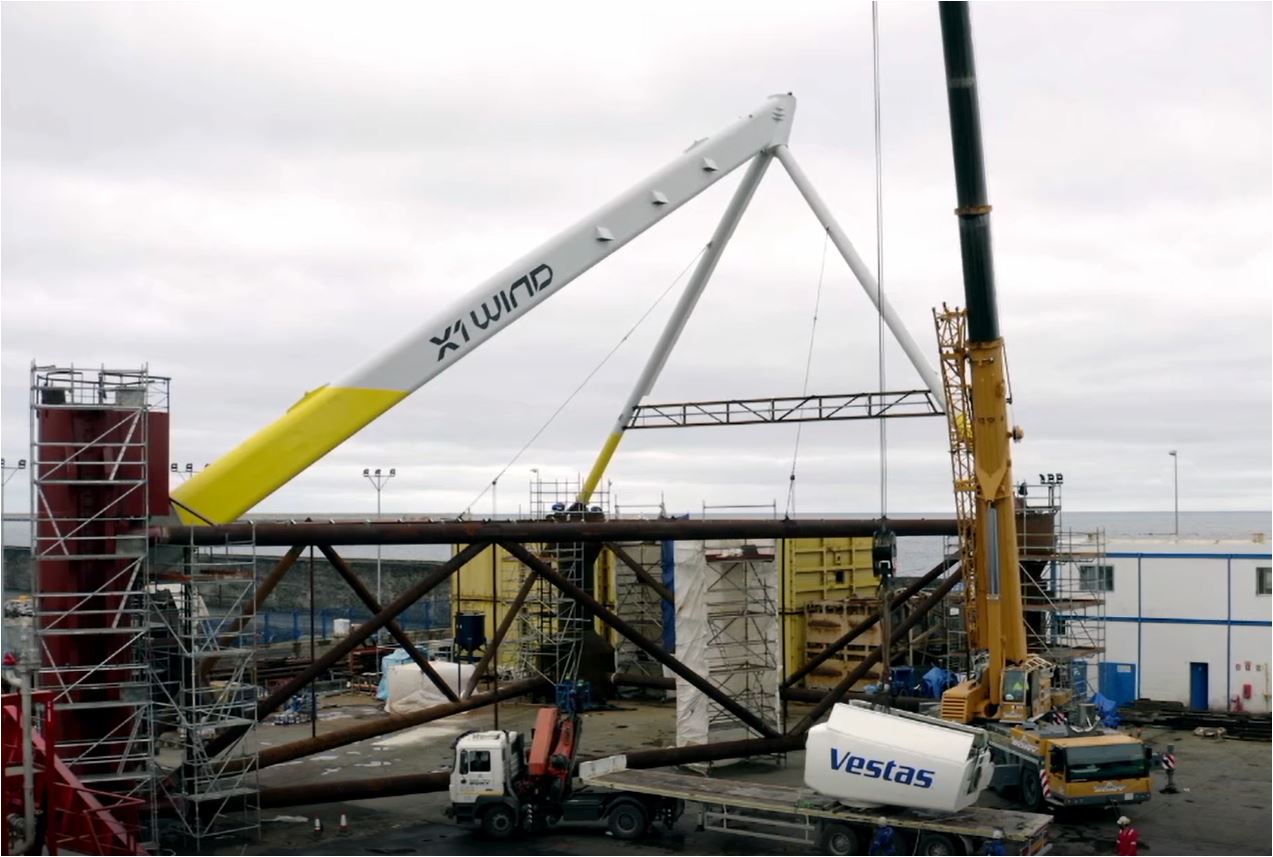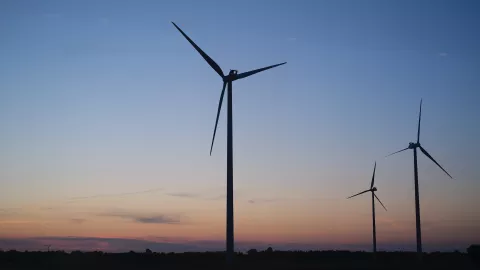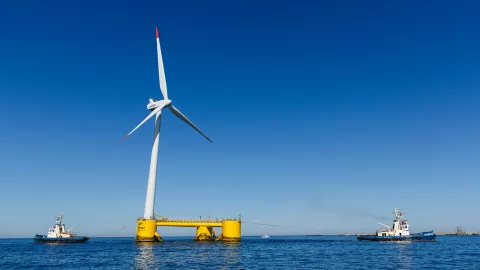Key data
Duration: 36 months
Overall budget: 4M €
Countries: 6 member states
Partners: 9
Goal
PivotBuoy focuses on the dimensioning, testing and demonstration in a real environment of an innovative floating structure for offshore wind energy production, which aims to reduce the level energy cost, up to 50%. The project involves developing and producing a system, on a 1: 3 scale and demonstrating it in the Atlantic Ocean, at the offshore testing center of Plocan - Canarias.
Both PivotBuoy and Wind Float aim to develop technology that enables offshore wind production in deep waters, based on floating solutions. They are different technologies, but they have some points in common. While WindFloat bets on semi-submersible technology, PivotBuoy bets on Tension-Leg Platforms (TLP) technology. But both aim to simplify the logistic chain associated with the transport and installation of devices at sea, using smaller and less expensive vessels and betting on maximizing the number of operations on land.
PivotBuoy is at an early stage of its development, but it has a high potential for cost reduction - because it bets on a lighter technology.
The choice of the Canarian Oceanic Platform to test this technology is essentially due to the characteristics of the oceanic soil of the region where this platform is found to be suitable for the type of anchorage that will be used in this demonstration project (gravity anchoring). This platform is also equipped with infrastructure that allows the energy transport cable to be directly connected here, which is another factor that contributed to this choice.
The installation is scheduled for the last quarter of 2021.
Highlights
- Led by X1 Wind
- NEWR&D/ Labelec leads work of LCOE Assessment, socio-economic impact & exploitation plan
Objectives
- Validation and testing of a part-scale prototype in a relevant environment (PLOCAN test site), validating the benefits of single-point mooring (SPM) systems;
- Assessment of cost reductions resulting from the PivotBuoy technology;
- Minimization of environmental impact with a smaller mooring footprint, lower noise compared to catenary systems and reduction of life-cycle emissions;
- Study of scalability, replicability and application to other substructures.

Main innovations of this project
PivotBuoy combines the advantages of single point anchoring systems (which enable the use of small ships in their pre-installation and connection to the anchored structure) and Tension-Leg Platforms systems (which present a lower weight, shorter length moorings and enhance platform stability).
This will lead to a significant reduction in the weight of floating wind structures when compared to the types of structures currently used, also simplifying the installation of TLP systems.
PivotBuoy's technology may come to make an important contribution to the decarbonisation of Europe and the World, especially as it will bring greater competitiveness to solutions for floating offshore wind.
PivotBuoy uses a type of anchoring and mooring with a smaller ecological footprint and that promotes less noise pollution in your installation. The volume of steel required for the construction of the structure is also lower compared to other structures used in projects with similar generation capacity. Thus, it is possible to reduce emissions not only in the production but also in the transport of the structure, which becomes feasible with smaller vessels and, consequently, less polluting.
Update: Commissioning phase
After almost two years of hard work, X1 Wind’s floating structure developed by X1Wind in close collaboration with the PivotBuoy project partners is nearing completion and moving forward towards the commissioning phase at PLOCAN test site in the Canary Islands.
The manufacturing phase of the project was successfully completed last November by DEGIMA, in Santander, and the structure was shipped to Gran Canaria by Actanis, the specialized project cargo division of Noatum. To facilitate the transportation and handling operations, the prototype was shipped in 9 different parts from Santander to Las Palmas, where the portside assembly is taking place in Hidramar, a shipyard with over 25 years of experience in the Oil&Gas industry and Naval sector.
The assembly operations started before Christmas with the positioning of the three columns and the placement of the pontoons, shaping the floating base of the platform. In the past weeks, the top structure has been assembled, composed of the three masts that hold the downwind turbine, completing the structural assembly in Hidramar’s onshore dockyard.
Finally, last week the Vestas V29 nacelle was installed on top of the PivotBuoy structure while the structure was still onshore, de-risking the operation and following onshore wind turbine installation standards. The blades will be installed after the load-out of the platform while the platform is still docked at quayside, allowing the operation to be performed by regular onshore cranes instead of heavy lift vessels normally needed to install offshore turbines.
Partners
This project, being Development Research, is 100% financed by the European Union.



